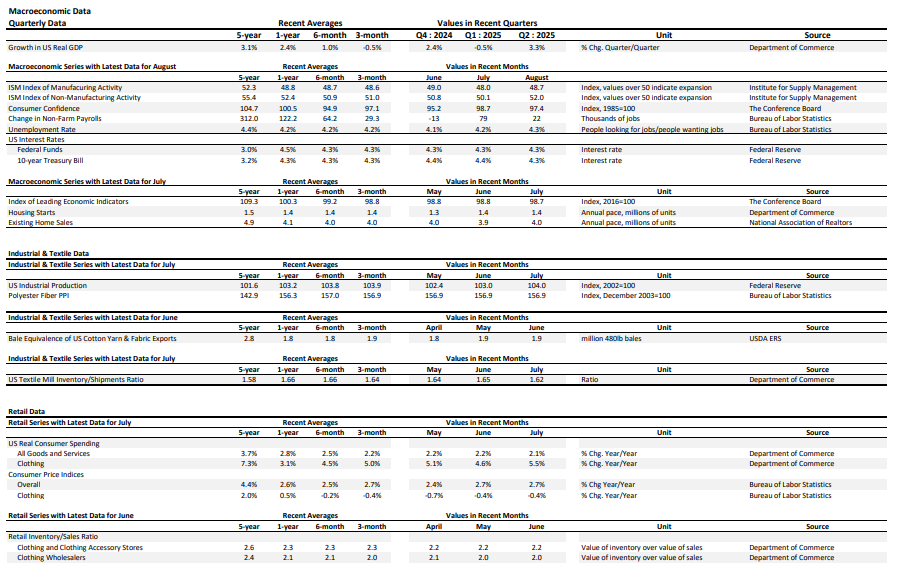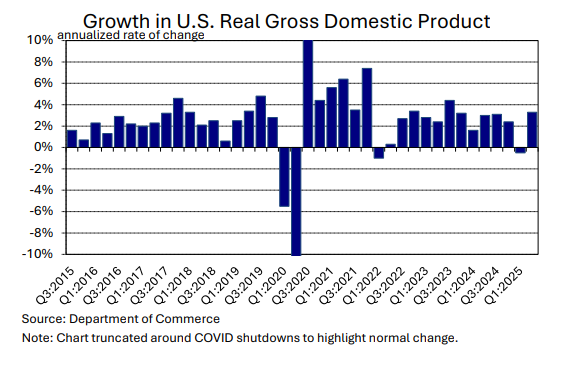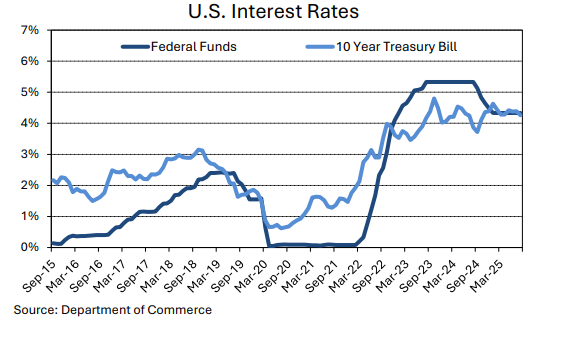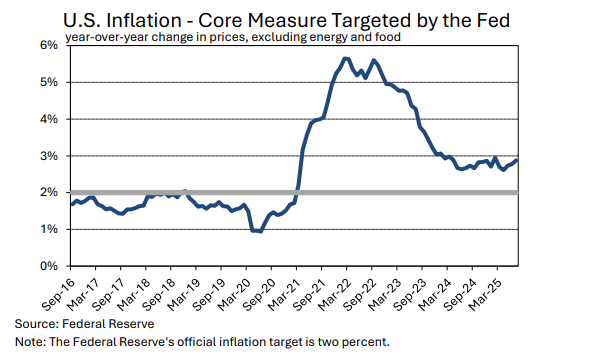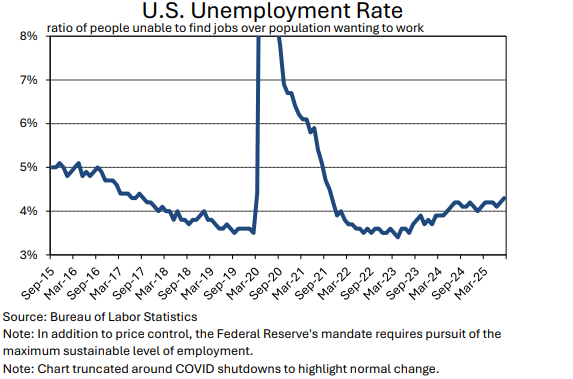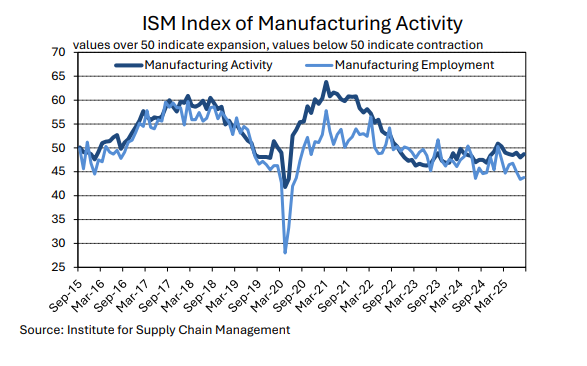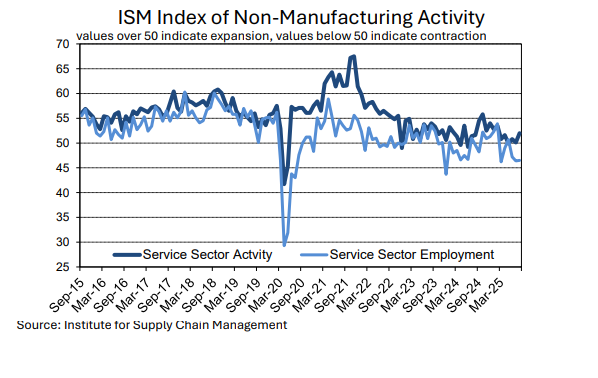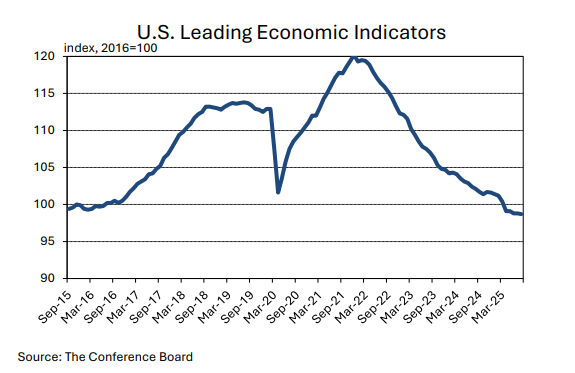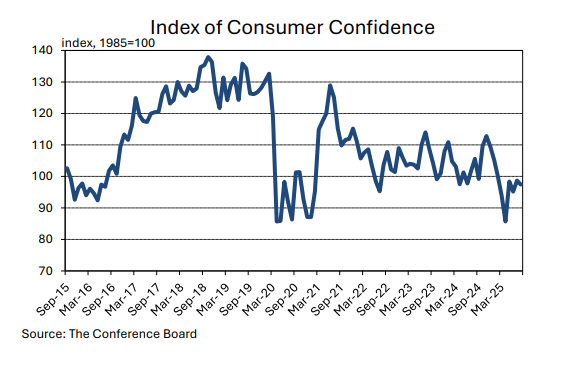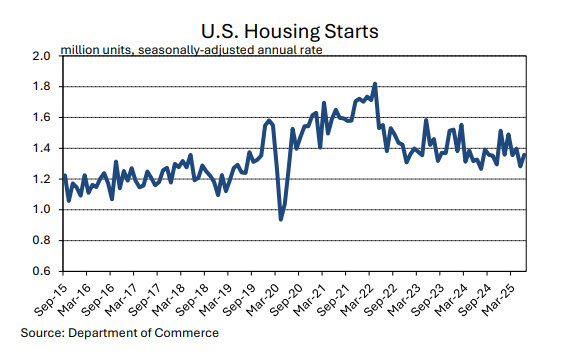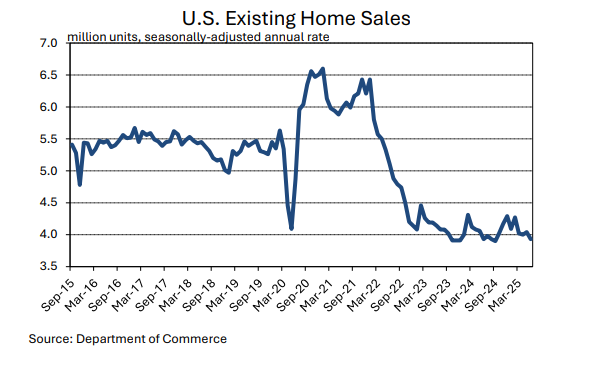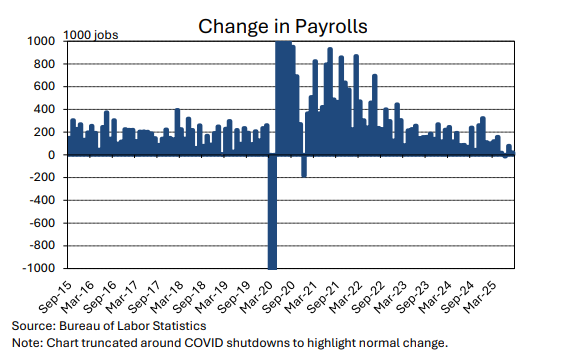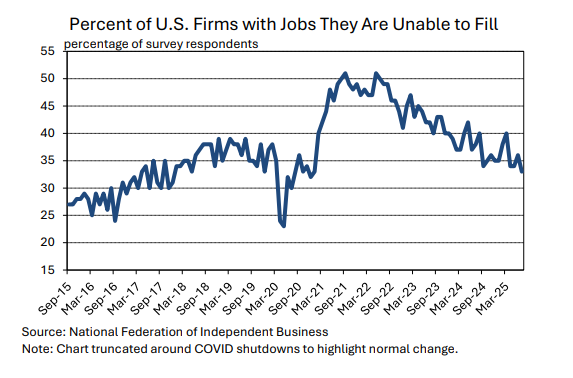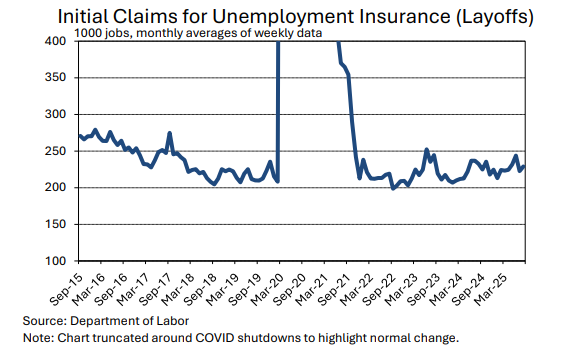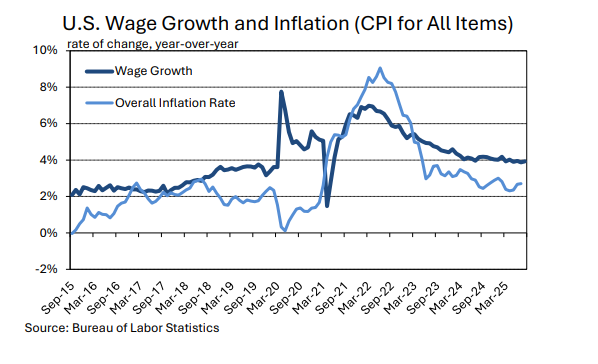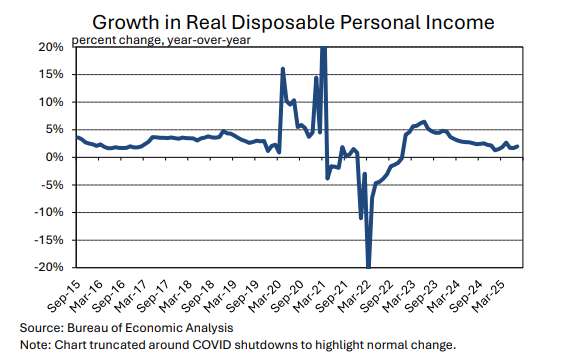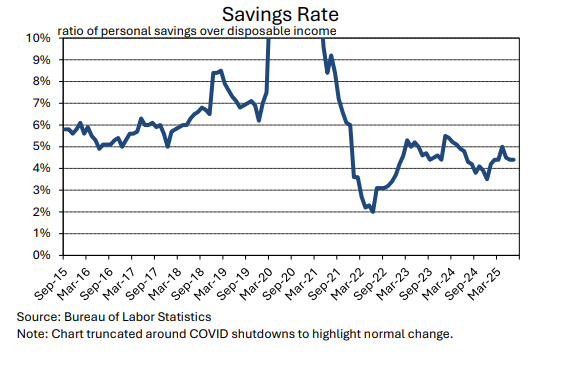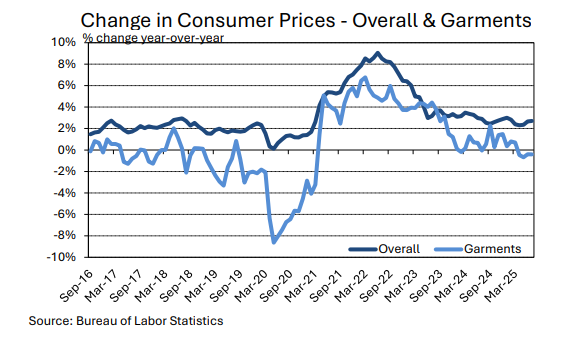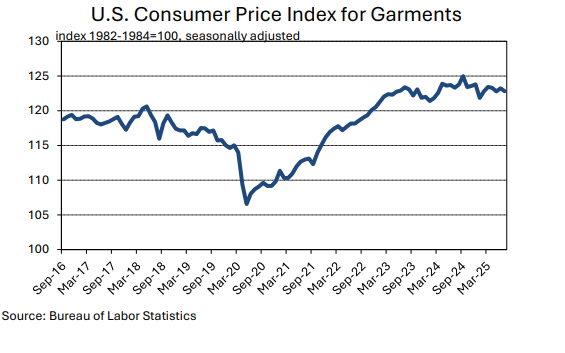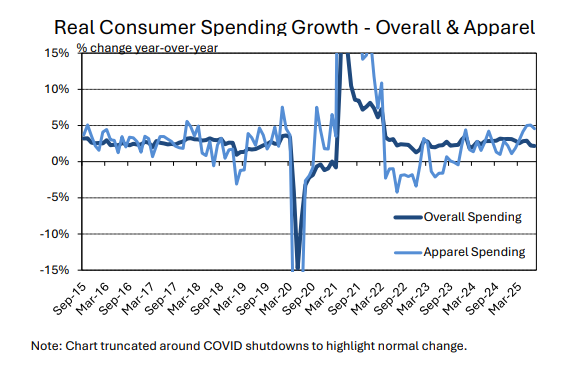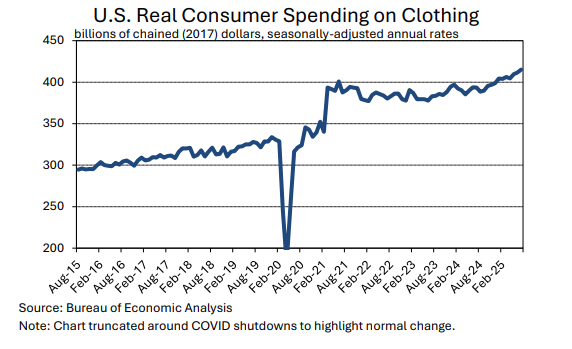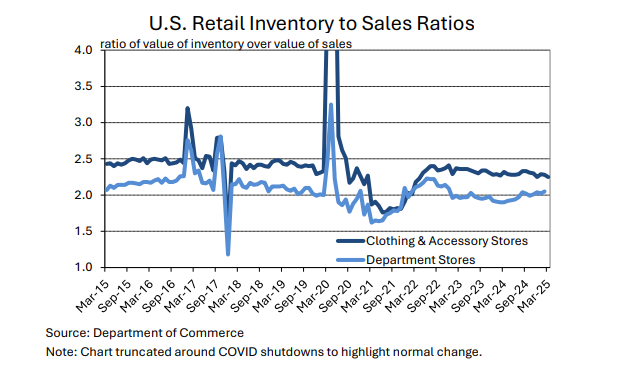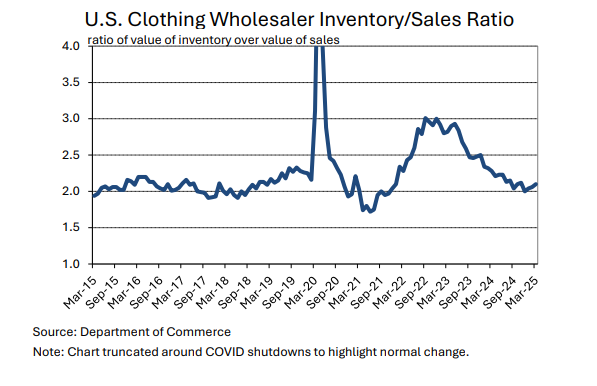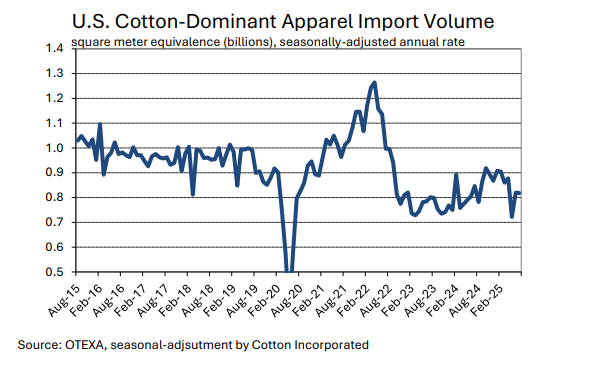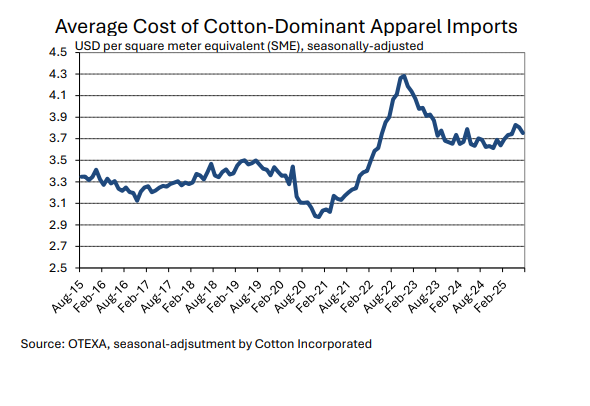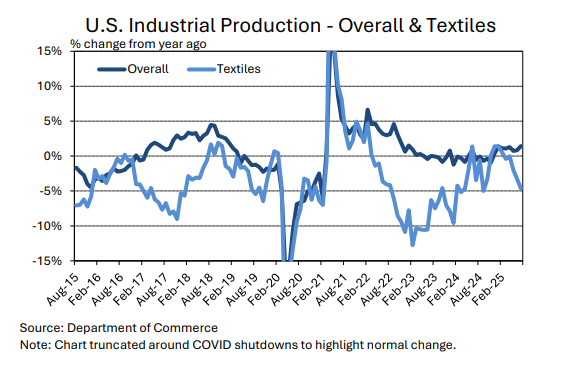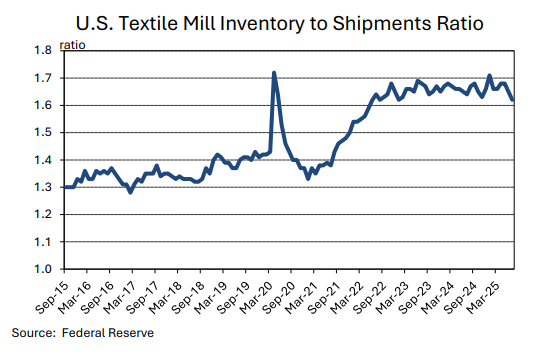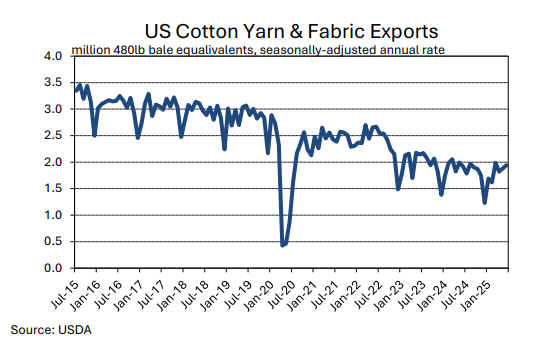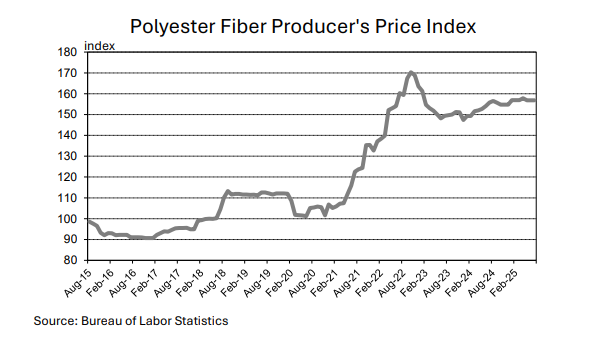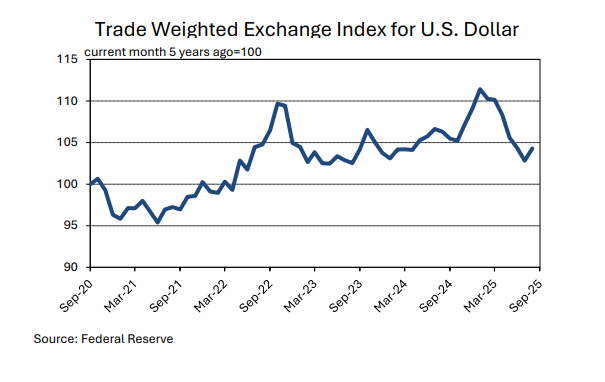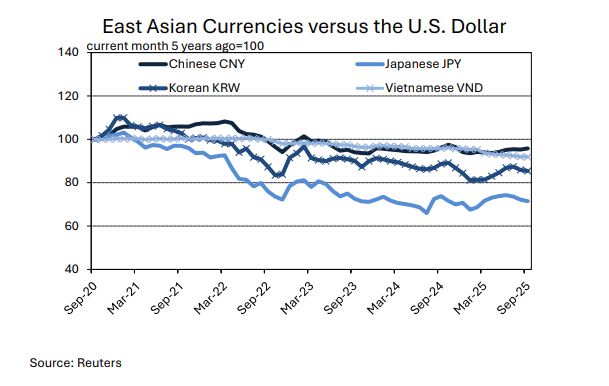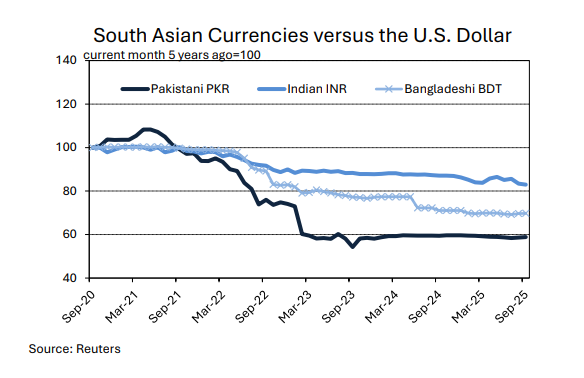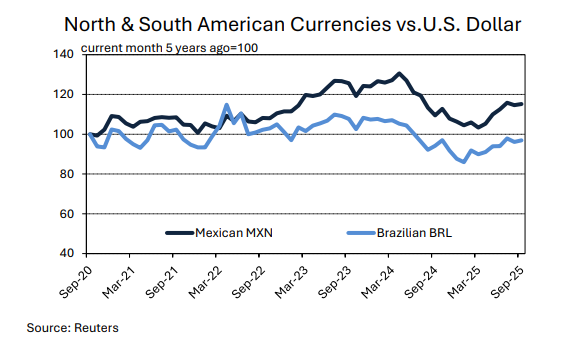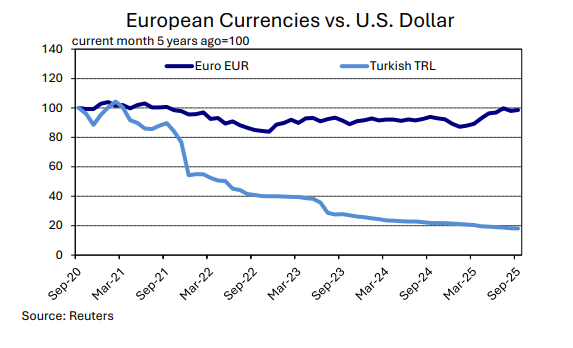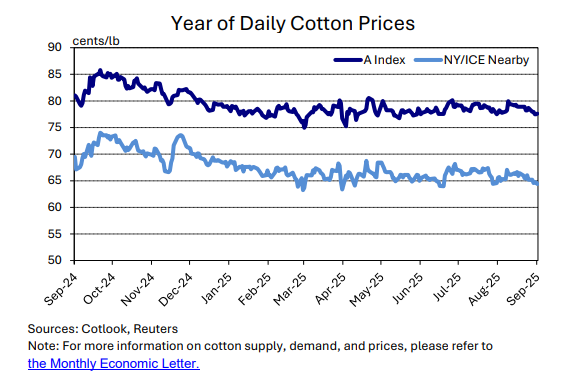Cotton Market Data
Track the latest shifts in cotton markets with at-a-glance data on prices, imports, and trade activity. This dashboard distills key findings from Cotton Incorporated’s Monthly Economic Letter and Executive Cotton Update into clear, actionable insights. Use it to stay informed, spot trends, and support data-driven decisions across the global cotton and textile supply chain.
Key Cotton Economic Insights
Staying ahead in today’s rapidly evolving cotton and textile marketplace requires access to reliable, timely, and actionable intelligence. Cotton Incorporated’s team of economic analysts publishes two indispensable resources each month, designed to keep industry professionals informed of the latest developments shaping global markets.
Monthly Economic Letter
A comprehensive report that provides in-depth analysis of supply, demand, trade, and policy developments across the world’s major cotton-producing and consuming regions. This letter offers the context behind key shifts, connecting macroeconomic factors, government policies, and shifting trade patterns to their potential impacts on the global textile industry.
Executive Cotton Update
A concise yet powerful snapshot that distills the month’s most important data points into an accessible, easy-to-digest format. The update tracks price movements, import and export activity, and market signals, giving professionals a quick read on where the industry is heading without sacrificing depth or accuracy.
What You’ll Find on This Page
Each month, the latest editions of both publications are made available here. Alongside the reports, you’ll find accompanying charts, price insights, and import data that translate complex market dynamics into actionable information. Whether you are sourcing raw cotton, planning production schedules, or evaluating market risks, these tools are designed to support informed decision-making and strategic planning.
By offering both a broad overview and a data-driven update, these resources ensure that professionals across the cotton and textile value chain have the knowledge needed to navigate uncertainty, identify opportunities, and maintain a competitive edge in an increasingly complex marketplace.
September 2025 Monthly Economic Letter
Cotton benchmarks were stable over the past month.
- The most actively traded December NY/ICE contract shifted lower in late July. In recent trading, it has been testing the lower end of the range between 66 and 71 cents/lb that has contained it since the start of the calendar year.
- The A Index was virtually unchanged over the past month, holding near 78 cents/lb.
- After increasing between May and the first half of July, the Chinese Cotton Index (CC Index 3128B) flattened out and then decreased slightly. In international terms, values eased from levels over 98 cents/lb to those near 95 cents/lb. In domestic terms, prices eased from 15,600 to 15,100 RMB/ton. In May, domestic prices set lows around 88 cents/lb or 14,100 RMB/ton. The RMB was stable near 7.18 RMB/USD over the past month.
- Indian spot prices (Shankar-6 quality) generally traded between 82 and 85 cents/lb or between 56,600 and 57,700 INR/candy. The INR traded around 86 INR/USD.
- Pakistani spot prices traded near 69 cents/lb or 16,300 PKR/maund over the past month. The PKR was steady around 283 PKR/USD.
SUPPLY, DEMAND, & TRADE: In the latest USDA forecasts for the 2025/26 crop year, projections for world production (-1.8 million bales to 116.6 million) and mill-use (-135,000 bales to 118.0 million) were lowered. Historical revisions, including a +1.0 million increase for Chinese consumption in 2024/25, lowered the figure for 2025/26 beginning stocks -1.7 million bales (to 75.0 million bales). The net effect was a -3.4 million bale reduction to the projection for global ending stocks in the new crop year (to 73.9 million bales). If realized, this volume is near the average since COVID.
The largest country-level revision for production was for the U.S., where the crop estimate was lowered -1.4 million bales to 13.2 million. This was due to a drop in planted acreage (-840,000 acres month-over-month, to 9.3 million) and higher abandonment (from 14% to 21% month-over-month). Outside the U.S., the largest changes to production included those for Sudan (-450,000 bales to 150,000), Uzbekistan (-300,000 bales to 2.6 million), Mali (-100,000 bales to 1.2 million), and China (+500,000 bales to 31.5 million).
For mill-use, the largest changes included those for India (-500,000 bales to 25.0 million), Bangladesh (-300,000 bales to 8.1 million), Turkey (-200,000 bales to 7.1 million), Uzbekistan (-100,000 bales to 3.0 million), and China (+1.0 million bales to 37.5 million).
The global trade estimate was lowered -1.1 million bales to 43.6 million. For imports, the largest changes were for China (-500,000 bales to 5.3 million), Bangladesh (-300,000 bales to 8.1 million), Turkey (-200,000 bales to 4.6 million), India (-100,000 bales to 2.9 million). For exports, the largest changes were for the U.S. (-500,000 bales to 12.0 million), Sudan (-400,000 bales to 150,000), and Mali (-100,000 bales to 1.2 million).
PRICE OUTLOOK: Tariff uncertainty remains a dominant question for supply chains. A general development in U.S. trade policy has been the assignment of different rates to different countries, replacing a standardized system involving common rates for most countries. The differentiation in duties across locations has added a layer of complexity to sourcing.
In July and early August, there was another series of announcements regarding tariffs. The most significant was the Executive Order released on July 31st. This document updated the string of letters sent from the U.S. administration to other heads of state that were issued throughout July.
Most of the tariff increases in the July 31st order fell between the 10-percentage point increase that went into effect April 10th for most countries (following the Executive Order issued April 9th) and the 30-percentage point increases applied to imports from China since May 14th (following the Executive Order issued May 12th). The average tariff increase, weighted by 2024 apparel import volumes, is near 20-percentage-points.
Beyond the July 31st Executive Order, there have been other changes to tariffs for specific countries. These include the rate hikes for Brazil (announced July 30th) and India (announced August 6th), which lifted the total tariff increases from those nations in 2025 to 50-percentage-points.
Negotiations with China have been on-going. The deadline initially established for talks was August 12th, but it was announced on August 11th that discussions will extend through November 10th. In the meantime, the 30-percentage-point increases that have been in effect on shipments from China since May 14th remain in place.
Both the breadth and pace of change complicates purchasing decisions, and the ultimate impact on global mill-use remains unknown. There could be implications for global economic growth in addition to any specific effect on U.S. apparel demand. U.S. apparel imports decreased in the few months of data available since tariff increase were implemented. In the first three months of the year, which may have been affected by front-loading ahead of potential tariffs, the seasonally-adjusted annual rate of raw cotton equivalence in U.S. imports was 13.5 million bales. Between April and June, the average was 12.7 million bales. This implies a decrease of six percent, but recent shipment volumes came soon after tariff increases were implemented and may not reflect longer-term reactions by retailers and brands.
There is also time for conditions in the fiber market to change. One set of timely indicators for global mill demand are USDA weekly export sales data. In figures through the conclusion of 2024/25, the sum of outstanding sales at the end of the crop year plus commitment for delivery in the new crop year was 3.8 million bales (480lb bales, upland + pima), which is the lowest volume since the start of 2015/16.
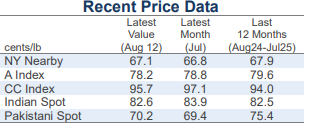
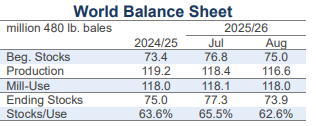
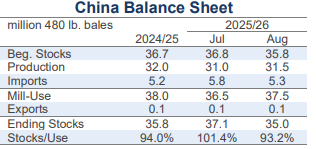
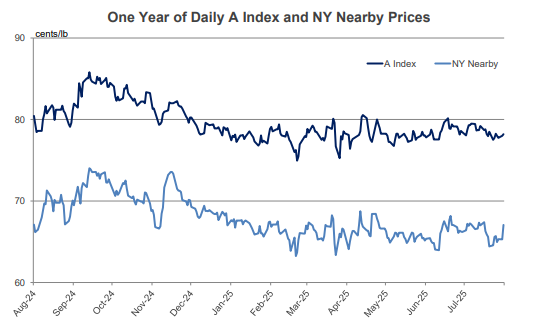
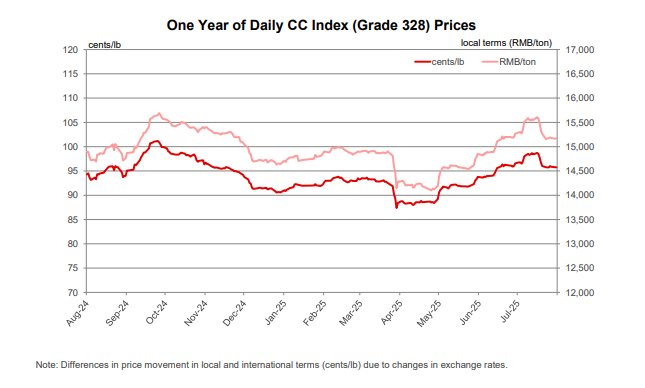
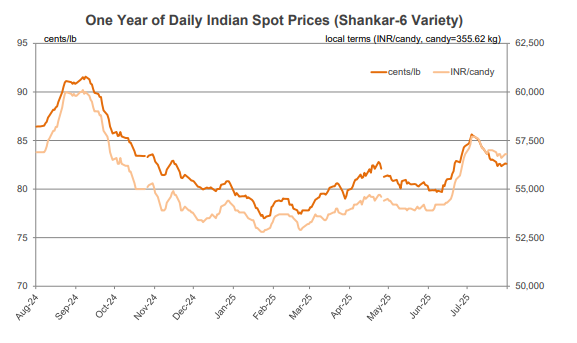
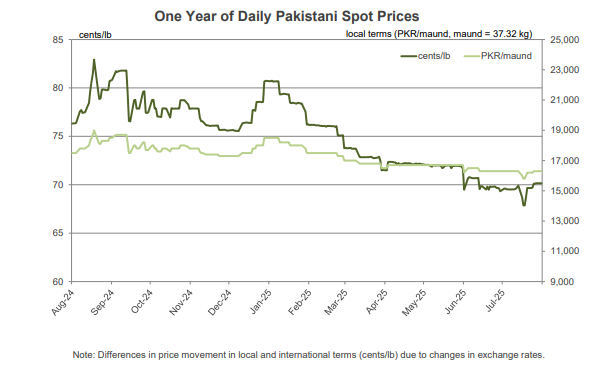
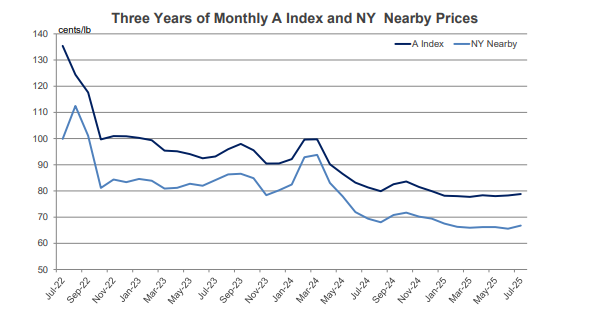
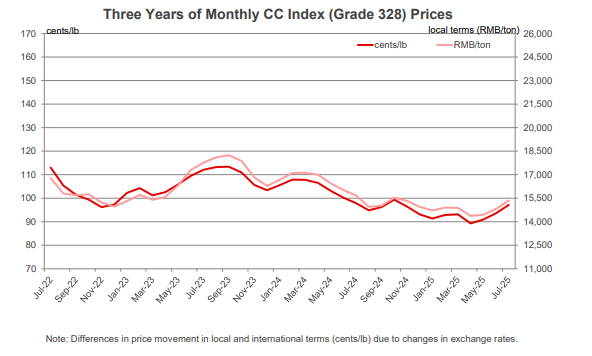
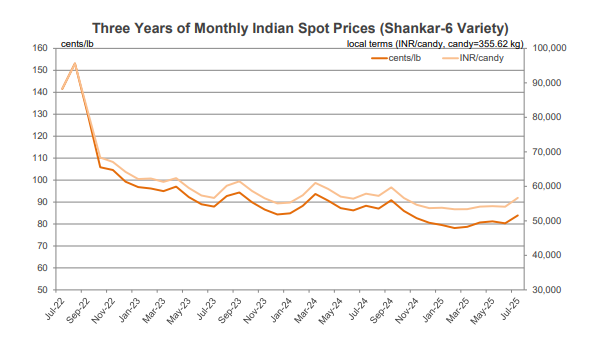
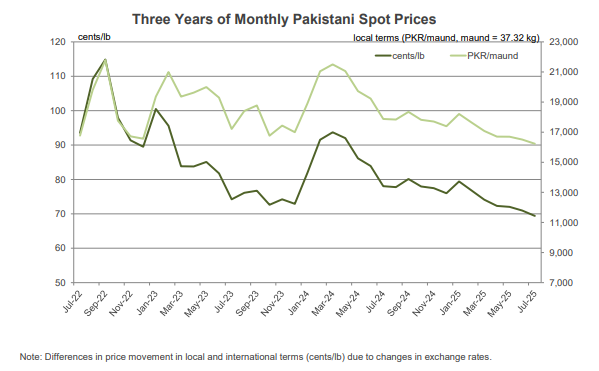

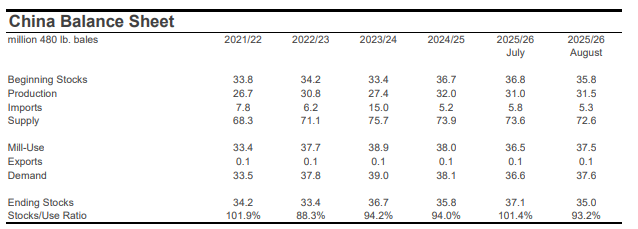
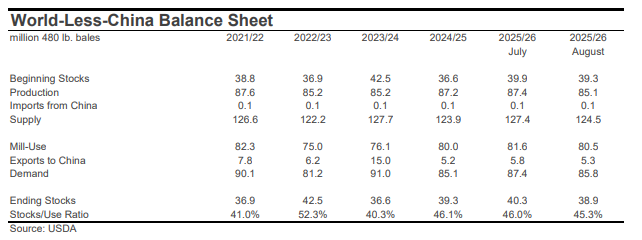
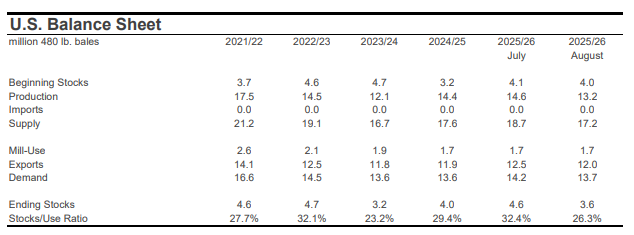
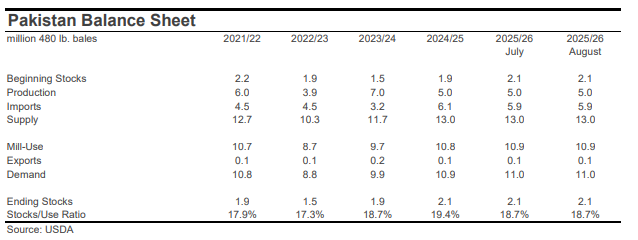
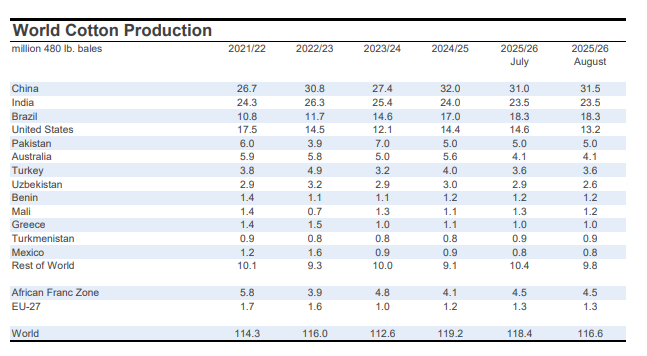
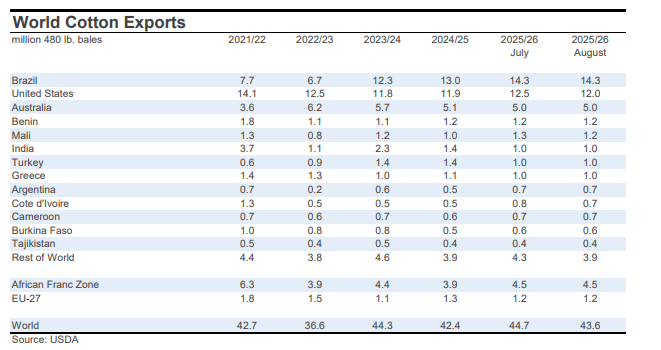
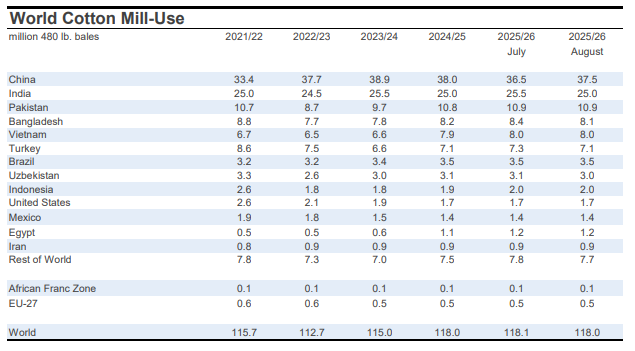
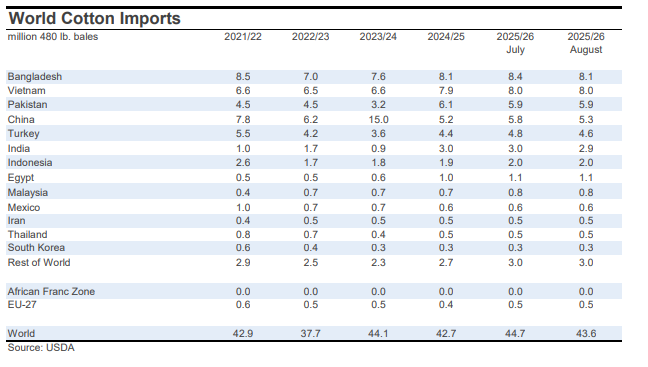

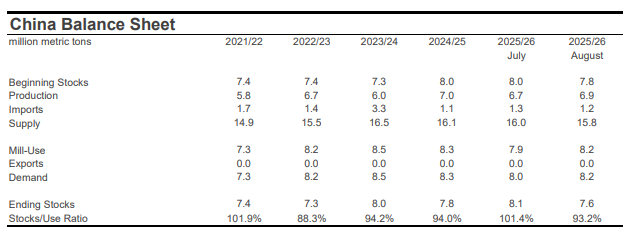
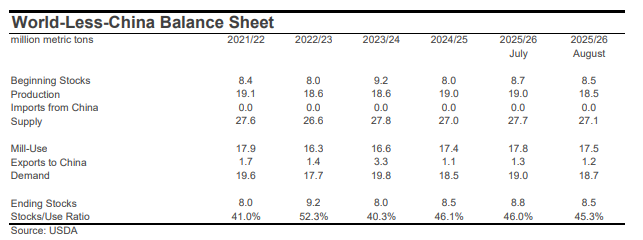
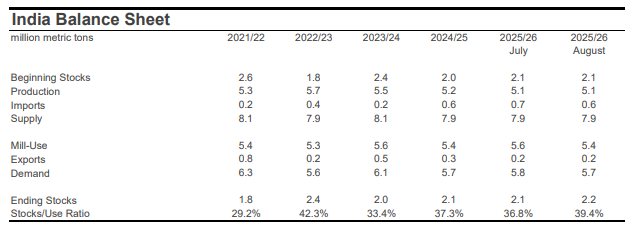
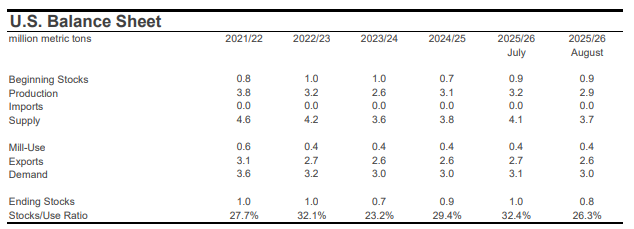
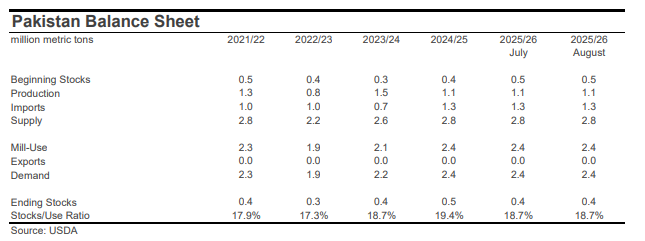
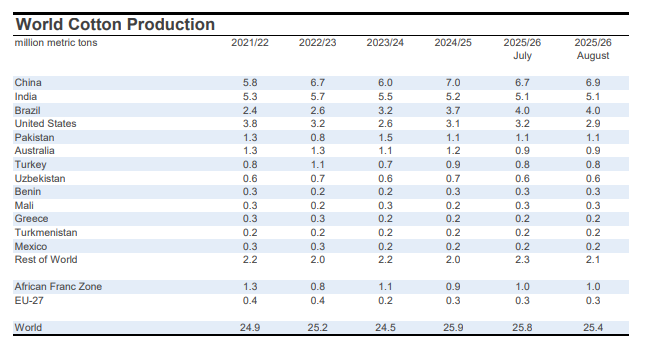
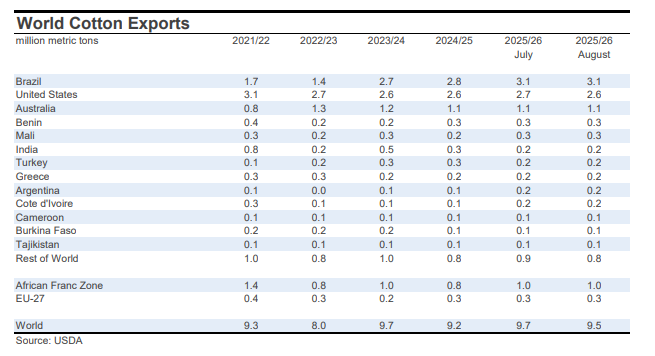
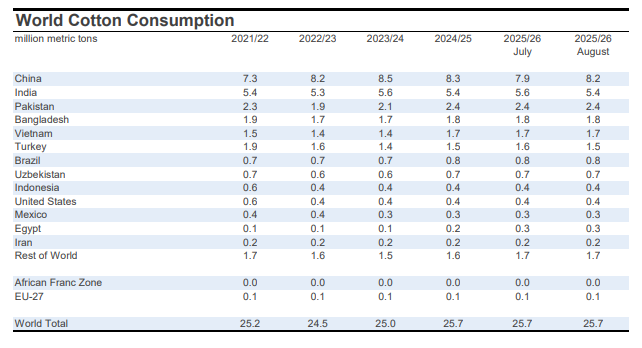
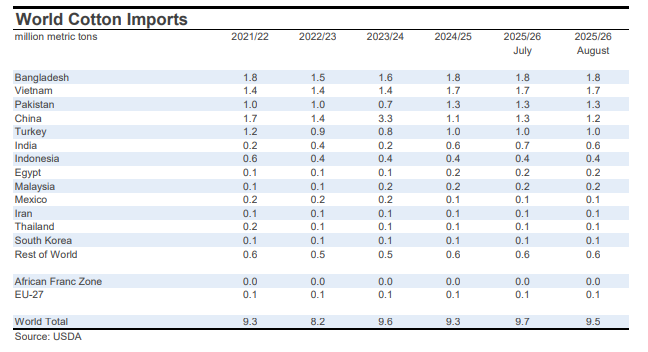
September 2025 Executive Cotton Update
Macroeconomic Overview: A central question for the U.S. economy is whether consumers will continue spending. A factor that has supported spending growth since the recession is the labor market, which was resilient to the surge in inflation and the rise in interest rates. After several years of strength, however, the labor market has been showing signs of softening.
Between 2022 and 2024, the unemployment rate was exceptionally low, consistently holding at levels below four percent. Starting in 2023, unemployment began to shift higher, and it rose above four percent around the middle of 2024. Since then, the rate has not changed much. The latest reading remains low by historical standards (4.3% in August), but it is the highest since late 2021.
Tightness in the labor market, exemplified by low unemployment rates, has supported wage growth. The pace of wage growth has been slowing (3.9% in August, down from the post-stimulus peak of 5.9% in March 2022), but it remains above any of the values registered between the financial crisis and COVID, when wages were commonly growing at less than three percent year-over-year. Despite the deceleration, wage growth has been higher than the overall inflation rate in every month since March 2023. Stronger increases in income relative to prices can help consumer spending.
After trending lower from late 2022 through early 2024, inflation has been holding at levels between 2.5% and 3.0%, with the latest (July) reading coming in at 2.9% (data in terms of the core consumption-price-deflator that the Federal Reserve most closely targets). While this is significantly lower than the levels over five percent that were recorded in the summer of 2022, it is also above the Fed’s official target of two percent.
Since inflation has not moved to levels approaching the Fed’s target, there has been reluctance by central bank officials to lower interest rates. Nonetheless, it is expected that signals from the labor market may prompt the Federal Reserve to lower rates at its next meeting (September 16-17). While the unemployment rate remains low, it has ticked up, and there are other indications that the tightness in the labor market may be easing. Recent job gains have been slower (+22,000 positions in August, the current 6-month average is +70,000, the average in 2024 was +168,000), and, in July, there were fewer job openings than unemployed people for the first time since the pandemic. Concerns about a softening labor market are expected to lead the central bank to decide to cut interest rates at their next meeting, which would be the first rate cut since September 2024.
Employment: The U.S. economy was estimated to have added +22,000 jobs in August. Revisions to previous months were mixed. The figure for June decreased by 27,000 positions, from +14,000 to -13,000. This represents the first month-over-month decrease in positions since December 2020, when COVID was a dominant influence on the economy. The figure for July increased by 6,000 positions, from +73,000 to +79,000. The current 12-month average is +122,000. The current 6-month average is +70,000.
The unemployment rate increased marginally, rising from 4.2% to 4.3%. While only slightly beyond the tight recent range between 4.0% and 4.2% that held values since April 2024, this is the highest value since October 2021. From the start of 2022 through early 2024, the unemployment rate was below four percent.
Year-over-year growth in wages was 3.9% in August. This is within the range between 3.9% and 4.2% that has contained wage growth since March 2024. In a nearly three-year period before March 2024, wage growth was consistently higher than 4.2%, reaching levels as high as 7.0% (March 2022).
Consumer Confidence & Spending: The Conference Board Consumer Confidence Index® did not change much in August (-1.3 points to 97.4). Apart from a dip to 85.7 in April, the index has remained with a range between 95 and 115 for the past four years.
Overall consumer spending accelerated month-over-month in July (+0.3%, from +0.1% in June and -0.2% in May). Year-over-year overall spending was +2.1% higher. This was nearly even with the +2.2% rate of increase in June. Both the rates in June and July were the slowest since early 2024.
Spending on garments increased +0.8% month-over-month in July. This builds on relatively strong increases in May (+1.2%) and June (+0.5%). Year-over-year, spending on apparel was up +5.5%. That annual rate of clothing spending growth is the highest since 2022, when figures were distorted by the recovery after the pandemic. The longer-term average for year-over-year growth in apparel spending is near two percent.
Consumer Prices & Import Data: On a monthly basis, average retail prices for apparel decreased in July (-0.4%). In terms of year-over-year change, the CPI for garments decreased for a fourth consecutive month (-0.5% month-over-month April, -0.7% in May, -0.4% in June, and -0.4% in July). Seasonally-adjusted cotton-dominant apparel imports were flat month-over-month in July at a level above the volume from May but below values over the previous six months.
